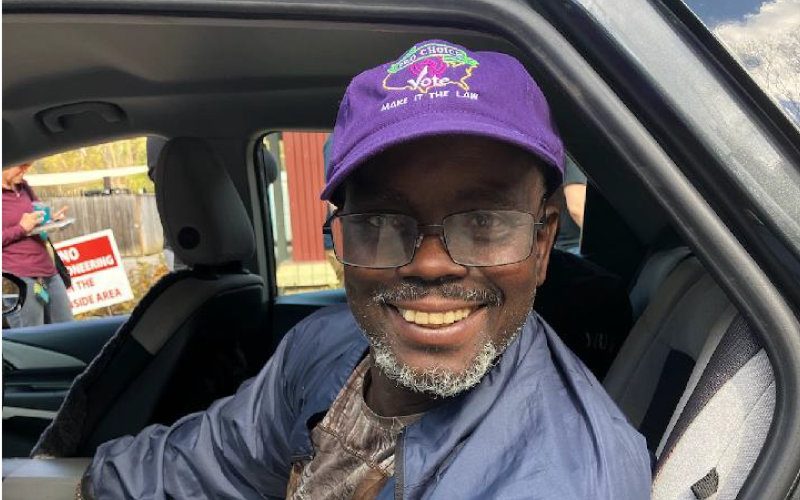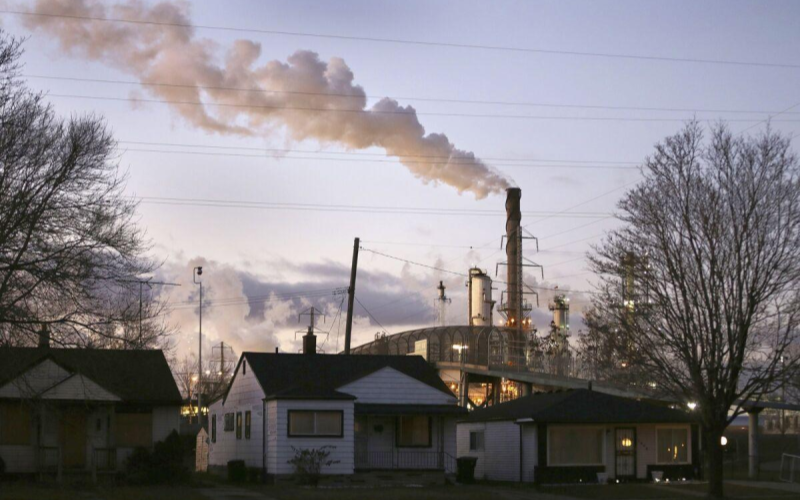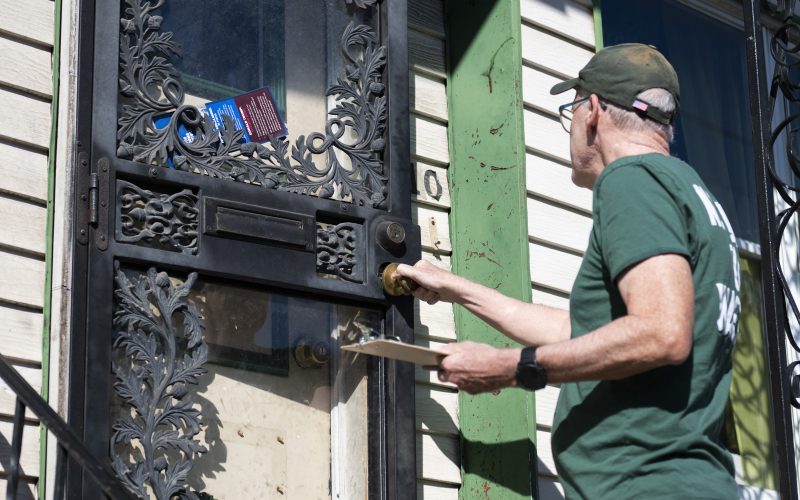Here at Third Act, we know anxieties are running high as we approach Election Day 2024 and anticipate awaiting the results of a very close presidential race. In this blog, we want to help people understand what to expect on Election Night, the legally required timeline for the days and weeks after the election, and some of the reforms that have been put into place since the 2020 presidential election.
Understanding vote counting
As explained by The Brennan Center, “the results that you see on election night coverage are not final and official results. They are instead a combination of unofficial results reported by election officials and news organization projections.” Counting votes actually involves a series of steps, including multiple checkpoints and safeguards, to ensure the accuracy of results and protection of voting rights. Election results only become official once certified. We’ll get into how this happens below.
Because there are a variety of ways that people can vote—in-person at the polls on Election Day; early in-person voting; vote-by-mail; and absentee ballots—there are also a variety of ways that votes can be counted and tabulated. And different states have different laws about when and how votes can begin to be counted. For example, Michigan now allows local officials to process and tabulate mail ballots before Election Day, allowing officials to count and report these vote totals faster than they previously could. In North Carolina, however, election officials must now wait until polls close on Election Day to begin tabulating ballots cast during the early voting period. Some states require that mail-in ballots must arrive by Election Day, while others ask that mail-in ballots must be postmarked by Election Day even if received after Election Day.
There are also provisional ballots that must be adjudicated and counted. And 30 states allow for a “ballot curing” process whereby small errors in a ballot can be fixed within a certain time period (such as a mail-in ballot’s envelope missing a signature). The Brennan Center’s blog clearly lays out the roadmap to the official vote count and the administrative procedures that are followed at every step in the vote counting process.
Election results: Expect delays and shifts
There are several legitimate reasons why it may take time to know the official results of this year’s election. Firstly, the aforementioned variety of ways in which people can now vote and the administrative processes involved with tabulating and cross-checking different types of ballots, all take time. Another factor is the different state rules about when certain types of ballots can start to be counted. And everyone already anticipates that challenges to vote counting and election practices will be brought up by candidates, further delaying the process.
Even if the election goes smoothly, there will likely still be a known and anticipated “red mirage” on Election Night where election results can initially appear to be favoring Republicans because it is known that Republican voters prefer in-person voting at the polls on Election Day and those ballots are counted and reported faster, whereas more Democrats prefer mail-in ballots, which are counted more slowly. So, a “blue shift” can appear as time goes on and more mail-in ballots are counted. These “mirages” and “shifts” are not an indication of election fraud or manipulation; rather, they are an expected phenomenon that has been observed, studied, and understood in earlier elections.
Republican voters prefer in-person voting at the polls on Election Day, and those ballots are counted and reported faster. In contrast, more Democrats prefer mail-in ballots, which are counted more slowly. Hence the terms “red mirage” and “blue shift.”
Understanding the presidential vote certification process and timeline
As described by the Campaign Legal Center (CLC), a nonpartisan legal organization advancing democracy through law, election certification is “a ministerial task that confirms the election process has concluded. At that stage, every vote has been counted and the results of the various races on the ballot have been determined.” Certification includes a series of deadlines at the local and state level that must be met before the results are officially finalized.
November 5, 2024—Election Day this year—marks the final day on which voters can cast a ballot in this year’s election, but the electoral system for choosing and inaugurating our president extends well beyond November 5. Notably, the Electoral Count Reform Act, enacted in late 2022, updated certain dates and procedures in the electoral vote counting process.
The 2024 election will be the first presidential election utilizing the ECRA’s updated rules and timeline.
Here is an outline of the timeline for the presidential vote certification:
- Appointment of state electors no later than December 11, 2024
- Meeting and Vote of Electors in their States: Tuesday, December 17, 2024
- Deadline for Electoral Votes to be Received by officials in Washington, DC: December 25, 2024
- 119th Congress Convenes: January 3, 2025
- Congress Counts Electoral Votes: January 6, 2025
- Inauguration Day: January 20, 2025
The ECRA clarifies the process for appointing electors; provides an expedited process for federal courts to resolve disputes about a state’s certification of electors; clarifies the vice president’s role in the process when Congress meets to count electoral votes; and raises the threshold for embers of Congress to object to a state’s certified election results.
Election certification is “a ministerial task that confirms the election process has concluded. At that stage, every vote has been counted and the results of the various races on the ballot have been determined.”
Republicans are already setting the stage to challenge the election results. They are trying to purge voter rolls (pushing actions that are illegal within 90 days of Election Day). And they will try, again, to challenge the certification process at local, state, and federal levels. However, the ECRA reforms make it impossible for states to submit alternate electors. As mentioned above, certifying the election results is a ministerial, not a political act, and it is illegal for local officials to refuse to certify election results. Constant vigilance will be required and numerous government officials in both parties and watchdog organizations are working to ensure that the rules are followed..
Election protection efforts
Third Act is a member of the 300-member strong Election Protection Coalition. Organizations in the coalition are involved with a variety of nonpartisan efforts to uphold the integrity of our elections, including Common Cause, Lawyers Committee for Civil Rights, ACLU, League of Women Voters, and many others.
You can do your part as a voter by knowing the voting rules in your state by checking here. You can use these Voter Tools to: register to vote, confirm your registration status, find your polling place, request an absentee ballot, and more. If you face problems in casting your vote, you can get help via the voter hotline: 866-OUR-VOTE.
You can also sign-up to be a Protect the Vote volunteer, help monitor the polls, fight misinformation, and support voters.
Many Third Act Working Groups are getting involved with election protection efforts, including ballot curing, and other efforts. We are also following Lawyers Defending American Democracy and the Democracy Docket, organizations bringing suits to uphold election integrity and the rule of law. You can check GrayPAC’s website and Third Act’s Elections page for various events and volunteer activities.
Sign-up to be a Protect the Vote Volunteer
Voting is the cornerstone of our democracy. Every vote should count and every voter's rights respected. Sign-up to be trained and deployed as a nonpartisan Election Protection volunteer.
Act NowLearn More About the Voting Rules in Your State
Find out when and how to vote in your state.
Learn More
Deborah Moore
Deborah is a Campaign Strategist here at Third Act. Her background is as an environmental scientist, with expertise on water and energy, and as a campaign manager and organizer, previously with the Union of Concerned Scientists, Green Schools Initiative, and Environmental Defense Fund. She has stopped destructive mega-dams and saved rivers and protect communities around the world; helped pass 100% clean energy and climate laws in California, Oregon, and Washington; co-founded an all-volunteer voter registration organization and helped pass vote-by-mail laws.
Deborah is based on Ohlone Land in Berkeley, California, and recently became a grandmother.



